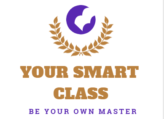Introduction
Curriculum is the backbone of any educational system. The way it is constructed determines not only what students learn but also how effectively they learn. As the world of education continues to evolve, the importance of a well-structured curriculum becomes more critical than ever. This makes understanding the principles and methods of curriculum construction essential for educators, administrators, and policymakers.
In this article, we’ll delve deep into the key principles guiding curriculum construction and explore modern methods used to design and implement an effective curriculum.
What is Curriculum Construction?
Curriculum construction refers to the systematic development of educational content, learning experiences, and instructional strategies. It involves selecting, organizing, and evaluating content based on specific educational objectives.
The process includes:
Defining educational goals
Choosing appropriate content
Deciding on the sequence and structure
Designing suitable teaching methods and assessment tools
A well-constructed curriculum serves as a blueprint for both teachers and learners.

Objectives of Curriculum Construction
To ensure the all-round development of learners
To align with societal and national goals
To meet the needs and interests of students
To integrate relevant knowledge and life skills
To provide a logical, structured sequence of learning
To support assessment and evaluation processes
Principles of Curriculum Construction
The construction of an effective curriculum is guided by several core principles:
1. Principle of Child-Centeredness
The curriculum must be designed around the needs, interests, abilities, and developmental stages of learners. It must promote self-discovery, creativity, and critical thinking.
“Education must be tailored to the learner—not the other way around.”
2. Principle of Utility
Curriculum content should be practical and useful in real-life situations. It must prepare students for personal, social, and professional life.
Examples:
Financial literacy
Communication skills
Digital competency
3. Principle of Flexibility
The curriculum should be adaptable to changes in society, technology, and student needs. Flexibility allows for integration of new ideas and innovations.
4. Principle of Integration
Learning should not happen in silos. Curriculum construction must promote interdisciplinary connections and holistic learning.
E.g., linking science with environment, or language with social studies.
5. Principle of Balance
A well-constructed curriculum should strike a balance among:
Cognitive (knowledge)
Affective (attitudes/values)
Psychomotor (skills) domains
It should also balance academic rigor with co-curricular activities.
6. Principle of Continuity and Sequence
Content should be arranged in a logical and developmental sequence, moving from simple to complex, known to unknown, and concrete to abstract.
7. Principle of Relevance
The curriculum must remain relevant to societal needs, job markets, local context, and global trends. It should address current issues and future challenges.
8. Principle of Participation
Teachers, students, parents, and community members should be involved in the curriculum construction process to ensure inclusivity and contextual fit.
9. Principle of Evaluability
The curriculum must be constructed in a way that allows continuous assessment and improvement through evaluation tools.
Factors Influencing Curriculum Construction
Philosophical factors (educational ideologies)
Psychological factors (learning theories and student needs)
Sociological factors (societal values, culture, needs)
Technological factors (digital tools, multimedia learning)
Political and economic considerations (national priorities, budget constraints)
Methods of Curriculum Construction
The methods refer to the processes and models used in planning and designing a curriculum. Different approaches can be taken depending on the educational context.
1. Deductive Method
Starts with broad educational goals or philosophies.
Breaks them down into specific learning objectives and content.
Common in national curriculum frameworks.
Advantages:
Systematic and policy-aligned
Structured approach
Disadvantages:
May ignore local needs
Less flexibility
2. Inductive Method
Begins with real-life problems or student needs.
Curriculum is designed based on practical demands.
Advantages:
Learner-relevant
Promotes innovation
Disadvantages:
Difficult to standardize
Can lack coherence if not managed carefully
3. Backward Design Method (Understanding by Design)
Begin with the end goals or desired learning outcomes.
Determine acceptable evidence (assessments).
Plan instructional activities accordingly.
Stages:
Identify desired results.
Determine acceptable evidence.
Plan learning experiences.
Ideal For: Outcome-based education.
4. Tyler’s Rational Model
Introduced by Ralph Tyler in 1949, it’s still widely used.
Four Basic Questions:
What educational purposes should the school seek to attain?
What educational experiences can be provided?
How can these experiences be effectively organized?
How can we determine whether the purposes are being attained?
Known For: Simplicity and applicability.
5. Taba’s Grassroots Model
Hilda Taba proposed that teachers should initiate curriculum development rather than top-down policymakers.
Steps:
Diagnose needs
Formulate objectives
Select content
Organize content
Select learning experiences
Organize learning activities
Determine evaluation methods
Best For: Classroom-level curriculum development.
6. Kerr’s Model of Curriculum
Developed by J.F. Kerr, this model expanded Tyler’s by including:
Objectives
Knowledge (content)
Learning experience
Evaluation
It emphasizes interaction among elements rather than a linear process.
Steps in Curriculum Construction Process
Need Analysis
Understand learner profiles, community needs, and institutional goals.
Defining Objectives
Set general and specific instructional goals.
Content Selection
Choose relevant, up-to-date, and accurate material.
Organizing Content
Sequence from simple to complex; known to unknown.
Choosing Learning Experiences
Ensure alignment with objectives and learner engagement.
Deciding on Teaching Strategies
Incorporate lectures, group work, projects, digital tools, etc.
Evaluation and Feedback
Build in tools for assessment, reflection, and improvement.
Modern Trends in Curriculum Construction
Integration of ICT and digital tools
Interdisciplinary and competency-based learning
Global citizenship and environmental awareness
Inclusive education
Curriculum localization and contextualization
Life skills and vocational preparation
Challenges in Curriculum Construction
Balancing national standards with local needs
Resistance to change from traditional models
Lack of teacher training and resources
Political interference
Evaluation complexities
Conclusion
Curriculum construction is a dynamic and thoughtful process that blends philosophy, psychology, society, and pedagogy into a coherent plan for learning. Guided by sound principles and using systematic methods, educators can develop curricula that are relevant, engaging, and effective.
Whether constructing curriculum for early education, secondary school, or higher learning, applying these principles and choosing appropriate methods will ensure that the curriculum remains learner-focused and future-ready.
Share this:
Discover more from YOUR SMART CLASS
Subscribe to get the latest posts sent to your email.








